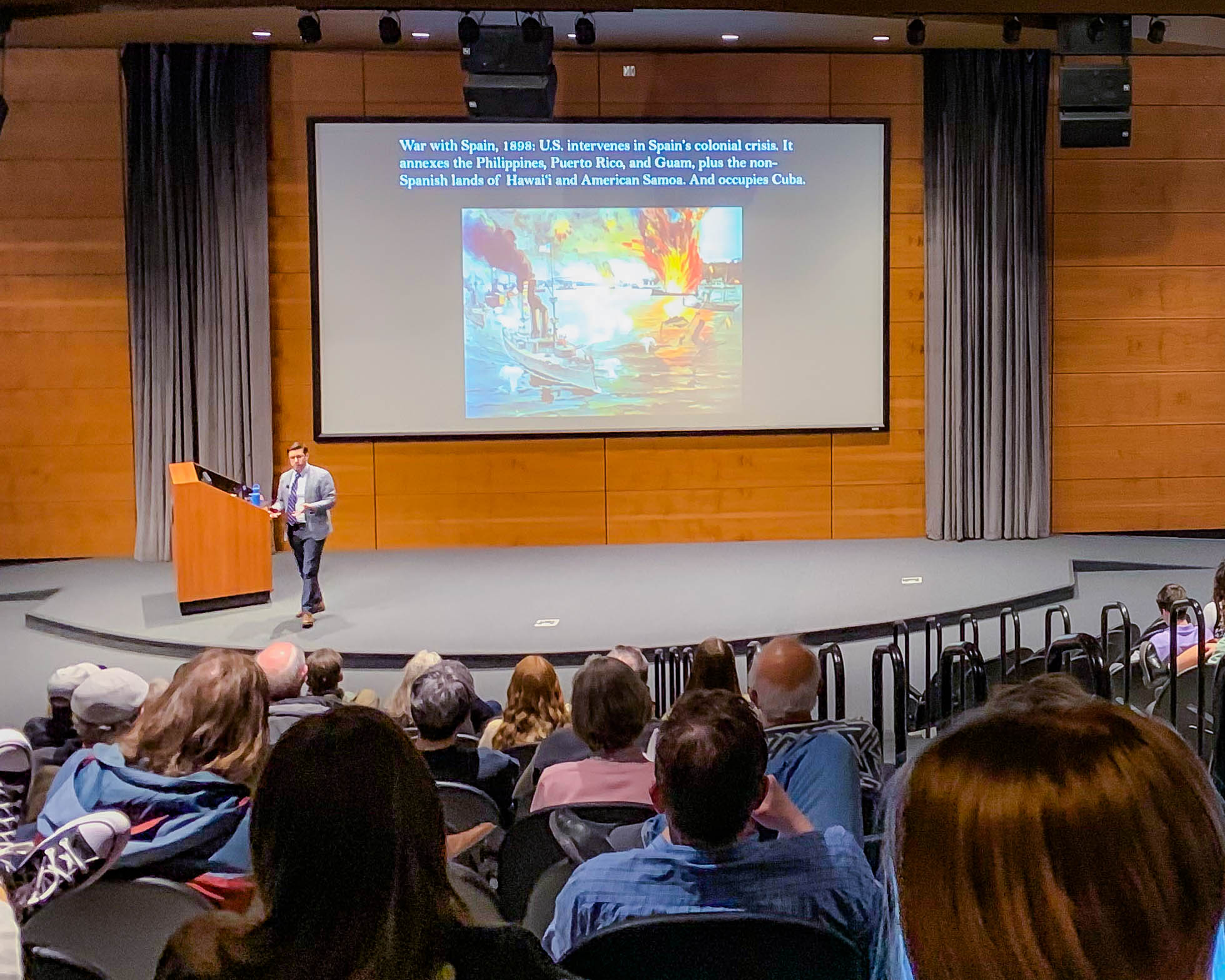Daniel Immerwahr visited Creighton last Thursday to give a lecture pertaining to his book “How to Hide an Empire,” a retelling of U.S. history with United States colonies and territories included in this story.
As students approached the Hixson-Lied Auditorium a table out in front of the doors displayed Immerwhr’s book.
Immerwahr is a professor of history at Northwestern University and his book was a national bestseller which won the 2020 Robert Ferrell book prize for the Society for Historians of American Foreign Relations.
In his book, as well as his lecture here at Creighton, Immerwahr is trying to flip the story on how U.S history is told.
When people are told to bring an image to mind of the United States, almost all will describe what Immerwahr referred to as “The Logo Map,” or the map of just the continental U.S. which is not an accurate depiction of the country’s legal borders.
In history classes around the nation, U.S. history is primarily over just the continental United States and almost never shows the rest of the territories that were colonized.
This hidden empire, this history of U.S. colonialism, is the primary problem that Immerwahr discussed as he said we are taught a more truncated history of the country.
“His lecture really helped expand my view of the United States’ colonialism. We often think of just the 50 states and forget about all the territories we used to have,” College of Arts and Sciences senior Camryn Halboth said.
Immerwahr focused his lecture primarily on the story of Pearl Harbor and how the United States got itself involved in the second World War.
The first point he made was one that many have overlooked or never known:
On the same day Japan attacked Pearl Harbor in Hawaii, they also attacked Guam, Midway Island, Wake Island, and the Philippines.
FDR’s “Day of Infamy” speech had originally addressed all of these attacks. However, after a last second change in the drafts, he only mentioned the attack at Pearl Harbor in Hawaii.
“FDR wrote them [the other U.S. territories] out of his speech, which in turn, wrote them out of history,” Heider College of Business freshman Conner Dvorak said.
This injustice towards almost one-eighth of Americans, that is one in eight people at the time lived outside the continent, most likely occurred as FDR’s audience did not think of those western colonies as truly American, so he scrubbed them out.
“Instead of saying ‘The Philippines and Hawaii or Guam and Hawaii’, he made it specifically about Hawaii because that was the only way America would get involved,” College of Arts and Sciences freshman Caleb Ortman said.
This different treatment toward territories as compared to the states still continues to this day.
“They still do not have any representation in congress and do not get to vote on any bills passed. I think that is a huge injustice to the people of American territories overseas,” stated Dvorak.
At the conclusion of Immerwahr’s presentation he received a long applause from the students who packed the auditorium.
